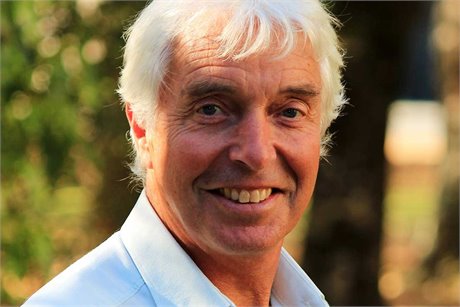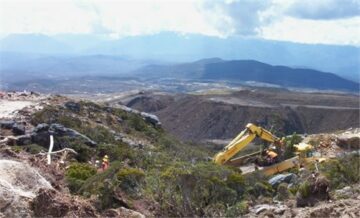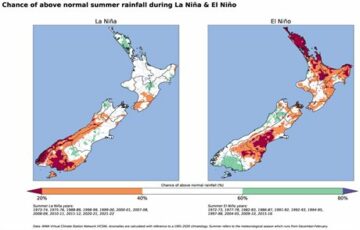By Ralph Sims
It’s been a good week for encouraging the uptake of renewable electricity generation in order to get closer to the Government’s 100% target by 2030.
As reported in Carbon News yesterday, the Government has begun to speed up the consenting process for selected renewable electricity generation projects, initially for three wind farms totalling 419 MW capacity and nine solar farms totalling 1147 MW.
Assuming capacity factors of 45% for wind and 15% for solar, then the total annual generation from these projects could reach around 2.8 GWh. This is about 6% of our total current generation. So these projects, if developed, could help reach a share of around 90% of renewable electricity over the next few years.
Interestingly, there are already around 2000 MW of wind farms and geothermal projects that have received consents over the past few years but have not yet been built. This is mainly due to having had a steady national demand for electricity over the past decade, in spite of the growth in population, since demand has been partly offset by improved energy efficiency measures.
Future demand growth is likely to increase more rapidly over the next few years due to the increasing conversion of coal and gas boilers to electro-thermal technologies such as high temperature heat pumps and the increase in electric vehicles, including buses, scooters, E-bikes, ferries, trucks as well as cars.
So yesterday’s announcement of the $2 billion climate infrastructure fund offered by global investment company Blackrock (at unknown terms of lending) that aims to encourage private investments in “green energy options” could be timely. Solar, wind, green hydrogen and battery storage projects are listed in the Government’s press release but it seems possible other generation technologies, such as bioenergy or geothermal, could also be included.
Dry year and market challenges
However, to get closer to the 100% renewable electricity target (Norway is already at 98%), even with this new investment fund and the relaxed consenting rules that together aim to accelerate renewable generation projects, two problems remain:
1) achieving grid stability in dry years with MBIE’s “NZ Battery” report, including the costly Lake Onslow option, yet to be completed; and
2) the wholesale electricity pricing market model being dominated by the four major gentailers that tend to protect their businesses by having a powerful lobby to Government. Will more new entrants to the market be welcomed?
Overall, the BlackRock investment has the potential to be beneficial for the growth of the renewable electricity industry. But the Government will need to have a good understanding of the complexities of the generation system and the market.
Just having a pot of money suddenly available to throw at encouraging proposed generation projects will only solve part of the problem.
Ralph Sims is Emeritus Professor, Sustainable Energy and Climate Mitigation at Massey University, and is a former IPCC lead author.
- SEO Powered Content & PR Distribution. Get Amplified Today.
- PlatoData.Network Vertical Generative Ai. Empower Yourself. Access Here.
- PlatoAiStream. Web3 Intelligence. Knowledge Amplified. Access Here.
- PlatoESG. Automotive / EVs, Carbon, CleanTech, Energy, Environment, Solar, Waste Management. Access Here.
- BlockOffsets. Modernizing Environmental Offset Ownership. Access Here.
- Source: https://www.carbonnews.co.nz/story.asp?storyID=28408
- :has
- :is
- :not
- $UP
- 1
- 15%
- 2000
- 2030
- 31
- 8
- a
- About
- accelerate
- achieving
- aim
- aims
- already
- also
- and
- Announcement
- annual
- ARE
- around
- AS
- At
- author
- available
- battery
- battery storage
- BE
- been
- begun
- being
- beneficial
- Billion
- BlackRock
- built
- Buses
- businesses
- but
- by
- Capacity
- cars
- Climate
- closer
- CO
- Coal
- company
- Completed
- complexities
- Conversion
- costly
- could
- Current
- decade
- Demand
- developed
- dry
- due
- efficiency
- Electric
- electric vehicles
- electricity
- encourage
- encouraging
- energy
- energy efficiency
- entrants
- Even
- factors
- Farms
- few
- For
- Former
- four
- from
- fund
- GAS
- generation
- get
- Global
- global investment
- good
- Government
- Green
- Grid
- Growth
- had
- Have
- having
- help
- High
- HTTPS
- Hurdles
- hydrogen
- if
- improved
- in
- included
- Including
- Increase
- increasing
- industry
- Infrastructure
- initially
- investment
- investment fund
- Investments
- IT
- jpg
- lake
- lead
- lending
- likely
- Listed
- Lobby
- mainly
- major
- Market
- measures
- mitigation
- model
- money
- more
- National
- Need
- New
- new investment
- next
- normal
- Norway
- of
- offered
- offset
- only
- Option
- or
- order
- Other
- our
- over
- Overcome
- part
- past
- plato
- Plato Data Intelligence
- PlatoData
- population
- positive
- possible
- pot
- potential
- powerful
- press
- Press Release
- pricing
- private
- Private Investments
- Problem
- problems
- process
- Professor
- projects
- proposed
- protect
- pumps
- rapidly
- reach
- received
- release
- remain
- Renewable
- report
- Reported
- rules
- seems
- selected
- Share
- sims
- since
- So
- solar
- SOLVE
- speed
- Spite
- Stability
- steady
- Still
- storage
- such
- sustainable
- Sustainable Energy
- system
- Target
- Technologies
- terms
- that
- The
- their
- then
- There.
- These
- this
- three
- to
- together
- Total
- true
- two
- understanding
- university
- unknown
- uptake
- Vehicles
- week
- welcomed
- WELL
- wholesale
- will
- wind
- wind farms
- with
- year
- years
- yesterday
- yet
- zephyrnet













